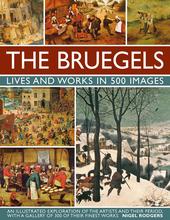More about Peasant Wedding Feast
- All
- Info
- Shop

Contributor
So the saying goes, “good artists borrow, great artists steal” and Breughel's Wedding Feast is no different.
No one knows who originally said that but it doesn’t matter because he probably ripped it off one of his friends. Artists have been stealing from one another for a long, long time. Sometimes artists steal from other time periods, sometimes from other countries, and sometimes even from themselves (see The Penitent Magdalene). However, it is rare that an attempted duplication results in the creation of not only a great work of art, but also one of the most touching and wholesome paintings in existence.
If you haven’t pieced it together, Peasant Wedding Feast is a copy of another painting by the same name. To be fair, they aren't exactly identical, as the original Peasant Wedding Feast is placed inside of a large building, while this one is obviously in someone's backyard. Beyond that, they are nearly exactly alike. The people are all in the same positions and are wearing the same clothes. There is the same number of soup bowls being carried around the table, and there is the same number of random wine jugs sitting in the bottom left corner of the painting.
So complete rip-off, right? In a way, yes, but there is a catch. The original Peasant Wedding Feast was painted by Pieter Brueghel the Elder. That's right, our Pieter was copying none other than his dear old dad. But before you go, “Oh wow I wish my daddy was a famous artist that let me get famous by copying his works,” it's important to know that Pieter Brueghel the Younger never actually knew his father, as the man died when our artist was about 5 years old. Pieter Brueghel the Younger was likely taught how to paint by his grandmother, and went on to make a career recreating his father's work. So even though he and his father were not able to have an IRL relationship, they were able to bond, in a way, through their art.
Pieter would do this with a multitude of his father’s paintings, and his skill as a copyist won him the admiration of his peers, who included Peter Paul Rubens and Anthony van Dyck. After his death, his son Pieter III would attempt a similar strategy with his art, but unfortunately he would be far less successful.
Sources
- Krén, Emil Marx, Daniel “BRUEGEL, Pieter the Elder: Biography” Web Gallery of Art viewed on 09/11/2019 https://www.wga.hu/html_m/b/bruegel/pieter_e/10/01weddin.html
- Libby, Alexandra. “Pieter Brueghel the Younger.” In The Leiden Collection Catalogue viewed on 09/11/2019 https://www.theleidencollection.com/archive/
- Web contributor “Pieter Brueghel the Younger: Biography” Artnet viewed on 09/11/2019 http://www.artnet.com/artists/pieter-brueghel-the-younger/biography
- Web contributor "Pieter the Younger Brueghel." Oxford Reference. Viewed on 09/11/2019 https://www.oxfordreference.com/view/10.1093/oi/authority.2011080309553…













